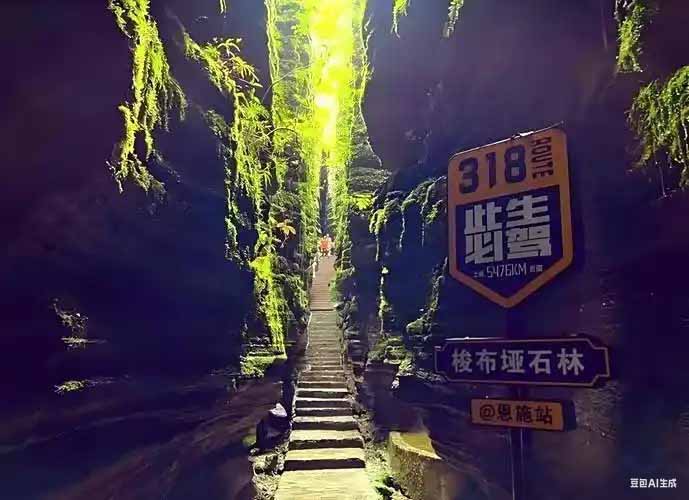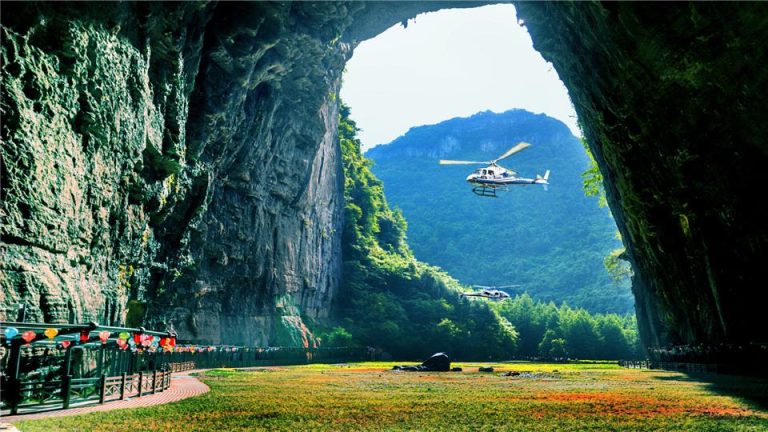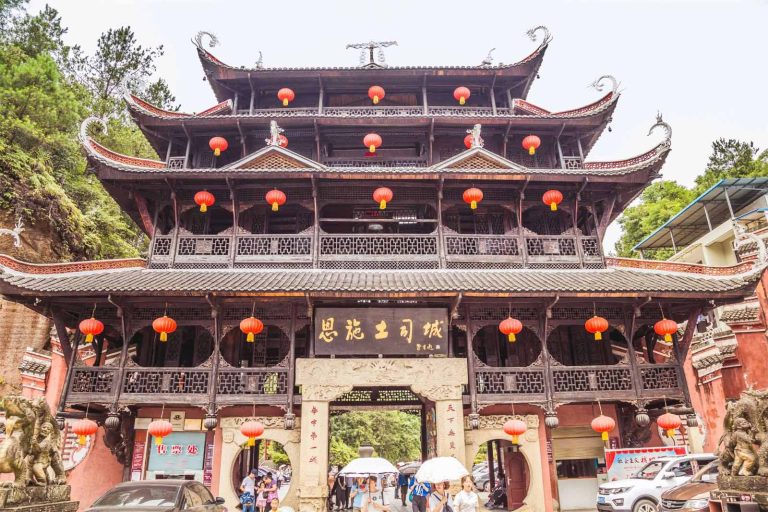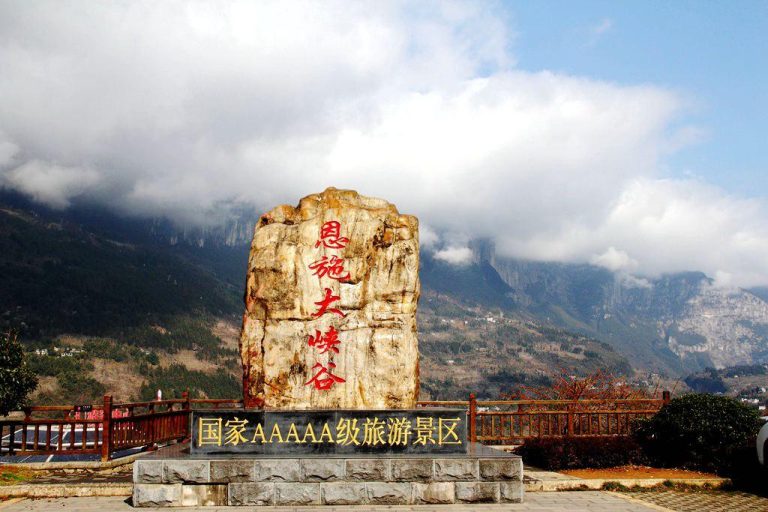address
Taiyanghe Township, Enshi City, Enshi Tujia and Miao Autonomous Prefecture, Hubei Province
Opening hours
The park is open; open from 08:00-18:00 (ticket sales stop at 16:30, admission stop at 16:30)
Official phone number
Ticketing consultation: 0718-8788066; 0718-8788022 Rescue phone: 0718-8788099
Among the lofty mountains of Enshi, Hubei Province, there is a geological treasure carved by time-the Sobuya Stone Forest. It is famous for its reputation as “the world’s No. 1 Ordovician stone forest”. It is an alternative presentation of karst topography and forms a distinctive but complementary natural landscape with the cliff peaks of Enshi Grand Canyon. Every stone here carries hundreds of millions of years of geological memory, and every gully tells the magic of natural evolution. It is an excellent place for hiking exploration, popular science research and photography.
1. Basic situation and geographical location
Sobuya Stone Forest is located in Taiyanghe Township, Enshi City, Enshi Tujia and Miao Autonomous Prefecture, Hubei Province. It is about 54 kilometers away from Enshi City and about 1.5 hours by car. It is located in the upper reaches of the Taiyanghe River, a branch of the Qingjiang River. It is located in the mountains at an altitude of 900-1200 meters. The total area of the scenic area is 21 square kilometers, and the core tourist area is divided into four major areas. It is the largest and most complete Ordovician stone forest discovered in China.
The so-called “Ordovician Period” is a period of about 480 million to 440 million years in the middle of the geological age. At that time, it was still a vast ocean. After a long period of crustal movement, seawater erosion and weathering, the carbonate rocks in the ocean gradually lifted up, forming today’s stone forest of different forms. ‘Sobuya’ means “three springs” in the Tujia language. It is named after the many natural springs distributed in the scenic area. It also implies the geological origin of the “water-made stone forest and spring-run secret realm” here.
2. Tickets and open information
1. Opening hours
The scenic area is open all year round, and the opening hours are slightly adjusted depending on the season.:
- Peak season (March 1st-October 31st):08:00-18:00(17:00 Stop entering the park)
- Off-season (November 1st-February 28th of the following year)):08:30-17:00(16:00 Stop entering the park)
2. Ticket price
- Adult ticket: 78 yuan/person in the peak season, 58 yuan/person in the low season (the ticket includes tours of the four core areas, excluding sightseeing cars and secondary consumption items)
- Sightseeing ticket: 30 yuan / person (must be purchased, each part of the scenic area is far away, it takes a long time to walk, and the sightseeing bus is a circular connection)
- Preferential policy:
- Half-price discount: minors aged 7-18, full-time students with undergraduate degrees and below (with student ID card), and seniors aged 60-69 (with ID card), 39 yuan/person in the peak season and 29 yuan/person in the low season (excluding sightseeing buses).
- Ticket-free policy: children under 6 years old and below or 1.2 meters tall (inclusive), elderly people over 70 years old (with ID card), active-duty soldiers /fire and rescue personnel (with valid documents), persons with disabilities (with disability certificate, severely disabled persons can bring 1 escort free of ticket), holdersThe press card of the State Administration of Press and Publication or the membership card of the National Photography Association are free of tickets (sightseeing cars need to be purchased separately).
- Special benefits: Every year on ‘China Tourism Day“ (May 19) and ”World Heritage Day’ (the second Saturday in June), scenic spots may launch half-price tickets or ticket-free activities. For details, please follow the official account to inquire in advance.
3. Core attractions: the “Geological Code” of the four major areas
The Sobuya stone forest is characterized by “melting patterns and wearing crowns“. It is different from the ”sword-shaped upright“ of the Yunnan stone forest. The stone forest here is more ”rounded and agile“, and each area has a unique theme and landscape. It is like four different ”geological encyclopedias’.
1. Qinglongtai Area: A fantasy Journey of ‘Stone Forest Maze”
Qinglongtai is the most central and representative area of the scenic area. It is named after the winding terrain like a green dragon. It is also the first stop for tourists after entering the park. The stone forest here has the highest density. The trail shuttles between the boulders, sometimes narrow to allow only one person to pass, and sometimes it is as wide as a natural square. It is known as the “stone forest maze”.
- Zhenlong Jade Pillar: An iconic landscape in the area. A stone pillar about 20 meters high rises from the ground. There is a naturally formed “jade crown” on the top. From a distance, it looks like a “dragon head” of a green dragon. The column body is covered with different shades of dissolved patterns, as delicate as dragon scales. It is the Ordovician Period.A typical example of weathering of carbonate rocks.
- Qinglong Gorge: A natural canyon in the stone forest. The streams in the valley are gurgling, and the stone walls on both sides are covered with ‘wave marks”-this is the trace left by ocean waves scouring the rocks 400 million years ago. When you touch it with your hand, you can clearly feel the “lines” of the ancient waves. It can be called a ‘living geological textbook”..
- A line of sky: Two huge stone forests are tilted opposite each other in an “inverted figure of eight”, leaving only a narrow gap in the middle. When sunlight passes through the gap, it will form light and dark intertwined light and shadow on the ground. In the early morning or evening, you may also see the stunning image of the “beam of light through the gap”.
2. Lianhuazhai Area: The aura of the king of the “Stone Forest with Crown”
Lianhuazhai is named after the stone forest surrounded by “lotus blossoms”. The stone forest here is characterized by “wearing a crown’-the top of many stone pillars is covered with a thicker layer of rock formations, like a ‘crown” or “hat’. It is a unique landscape formed by the differences in the weathering resistance of different rock formations., It is relatively rare in the karst topography of the world.
Lotus throne: The core landscape of the area, a circular stone forest surrounded by a ‘lotus shape”, with a flat rock in the center like a ‘lotus heart”, and the “stone crown” on the top of the surrounding stone pillars like petals. Legend has it that it was once the “altar” where the ancestors of the Tujia worshipped, and it can still be felt today.Solemn atmosphere.
Rhino ditch: A shallow ditch hidden in the stone forest. At the bottom of the ditch, there is a boulder shaped like a rhino. The stone body is covered with moss, which contrasts sharply with the surrounding gray stone forest. During the rainy season, small waterfalls will form in the ditch, and water will drip down the gaps in the stone forest, like a vivid scene of “rhino drinking water”.
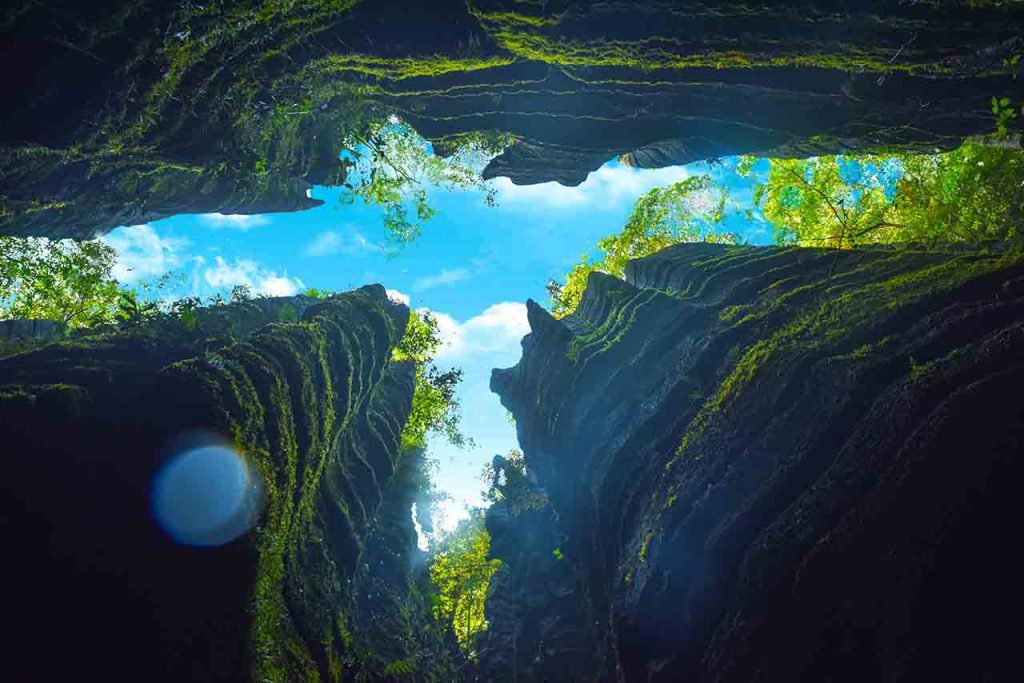
Danfeng Chaoyang: A sloping boulder with a top outline like a phoenix spreading its wings. When the sun shines in the early morning, the stone body will show a faint orange-red color, as if the phoenix is bathed in the chaoyang sun. It is a must-take spot for photography enthusiasts.
3. Mozigou Area: The secret realm of symbiosis between ‘caves and Stone Forests”
Mozigou got its name because there is a boulder shaped like a “stone mill” in the area. This is the area where the stone forest and the cave are most closely combined. There are both wonders of the stone forest on the surface and the secret realm of the cave underground, showing the three-dimensional landscape of “above-ground stone forest and underground maze”.
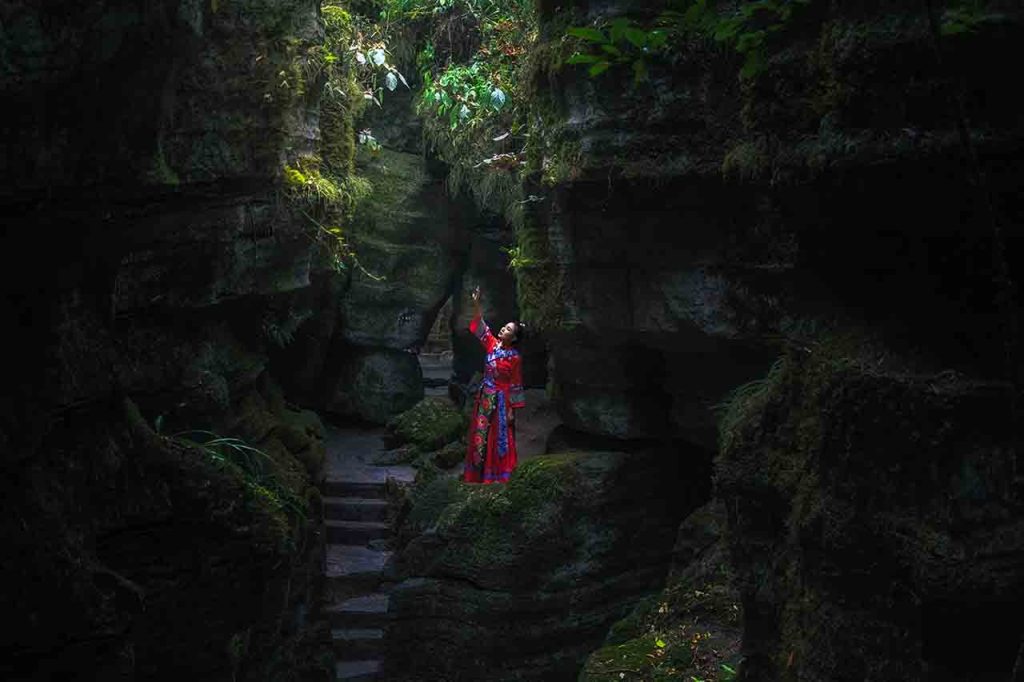
- Kowloon Hui: The nine stone pillars are arranged in an arc, like nine dragons gathered together. The bottom of the stone pillars is connected to the underground cave. During the rainy season, the “murmur of water” from the cave can be heard, as if the dragon is “drinking water and spitting mist” underground.
- Nuo Po Stone: A boulder that resembles a “Nuo Opera mask”. The facial contours are clear, and the forms of the eyes, nose, and mouth are lifelike. It is a wonderful fusion of Tujia Nuo culture and natural landscape. The Tu family believes that this stone has the meaning of ”praying for blessings and ward off evil spirits’, and many tourists will take pictures here as a souvenir.
- Sinkhole cave: There is a small sinkhole hidden in the area. There is a cave entrance at the bottom of the sinkhole. The stalactites in the cave are well-developed. Although not as grand as Tamron Cave, it is better than “small and exquisite” and connected to the stone forest. You can experience the unique sense of exploration of “walking from the stone forest into the cave” (The cave needs to be entered under the guidance of a guided tour, and some areas need to be careful of slippery).
4. Kowloon Hui Area: The Humanistic Imprint of “Boulders and Legends”
The Kowloon Hui area is centered on “large-scale monolithic strange stones” and “Legends of the Tu Family”. Although the scale of the stone forest here is not as dense as the previous three, there are many lifelike “pictographic stones”. Behind each stone is the ancient story of the Tu family.
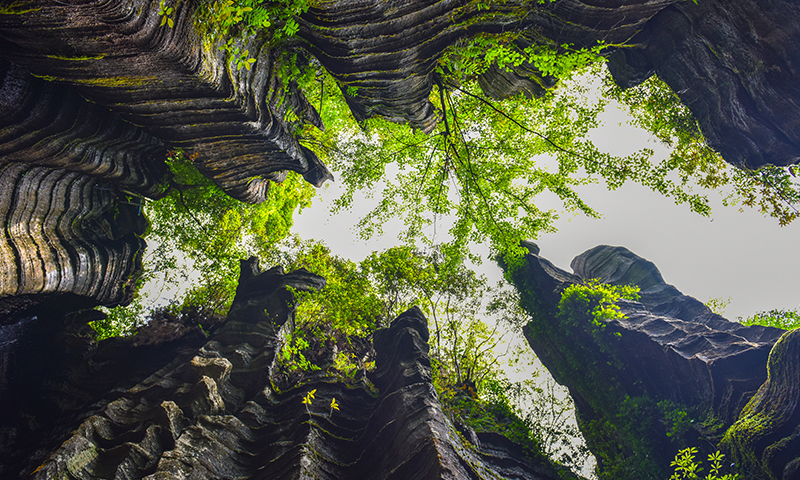
- Linjun boots: A boulder shaped like a “boot”, about 5 meters high, with the outline of the sole and boot shaft clearly visible. Legend has it that this is the “god boot” left by Linjun, the ancestor of the Tujia tribe, when he traveled westward, symbolizing Linjun’s protection of the people.
- Ganoderma lucidum stone: A flat boulder with multiple bumps on the top, shaped like ‘Ganoderma Lucidum”. The stone body is covered with green moss. From a distance, it looks like a giant Ganoderma lucidum that has just grown after the rain. It is a popular spot for tourists to check in.
- Lover’s stone: Two stone pillars that depend on each other, one slightly higher and the other slightly shorter, like a pair of couples standing side by side. The “stone crown” on the top of the stone pillar is like the “bun” of the two. The Tu family calls it “Amei Panlanggui”, which is a symbol of love.
4. Play suggestions and precautions
1. Play time and route planning
It is recommended to visit throughout the day (about 5-6 hours). The route can be visited in the order of ‘Qinglongtai →Lianhuazhai →Mozigou →Jiulonghui’. The sightseeing bus will cycle along this route to avoid turning back. If time is tight, you can give priority to visiting Qinglongtai and Lianhuazhai, these two areas concentrate the core landscape of the stone forest.
2. Equipment and outfit
- Shoes: Be sure to wear non-slip sports shoes or hiking shoes. Most of the stone forest trails are stone steps, and some areas are wet and slippery (especially near the Mozigou cave). Avoid wearing high heels or sandals.
- Clothing: There is a large temperature difference between day and night in mountainous areas, so it is recommended to bring a thin coat even in summer; raincoats are required during the rainy season (May-August) (umbrellas are inconvenient to use in stone forests) to avoid catching cold after getting wet.
- Others: Bring sunscreen, sun hat (strong ultraviolet rays in summer), and power bank (there are fewer charging points in the scenic area). If you want to explore the cave in depth, you can bring a flashlight (mobile phone flashlight is also available).
3. Safety and environmental protection
- Safety first: walk strictly according to the signs of the scenic area, and do not enter undeveloped areas without authorization (some stone forests have deep crevices and may be at risk of falling rocks); pay attention to your feet when taking pictures to avoid falling down due to focusing on the view.
- Take care of the environment: the rocks in the stone forest are very fragile, and it is forbidden to climb, dig or knock on stone pillars. There are trash cans in the scenic area. Please do not litter to protect the original style of the “Billion-year stone Forest”.
4. Dining and Accommodation
- Catering: There are small restaurants or food stalls in all areas of the scenic area, which mainly provide Tujia specialties, such as Heji, bacon fried shredded potatoes, Tujia pancakes, etc., with a per capita consumption of 30-50 yuan. You can also bring your own dry food (such as bread and fruit) and eat in the rest area of the scenic area.
Accommodation: If you want to have an in-depth experience, you can choose to stay in a “Shilin Homestay” around the scenic area, such as the Tujia Hanging Foot Building Homestay in Taiyanghe Township, with a price of 80-200 yuan /night, you can experience the characteristics of Tujia Huotang, farmhouse vegetables, etc.; If you return to Enshi City on the same day, it is recommended to stay at 17:00. Take a sightseeing bus out of the park before, to avoid missing the return shuttle bus.
5. Featured experience recommendation
- Popular science research: There is a “Ordovician Geological Museum” (free of charge) in the scenic area, which can learn about the formation process and geological knowledge of the stone forest, which is suitable for families with children; some seasons will also launch “Little Geologist” research activities, you need to make an appointment in advance.
- Tujia culture: There are often Tujia song and dance performances (such as hand-waving dance and dragon boat tune singing) at the entrance of the scenic area, which are free to watch; if you catch up with the “Tujia Daughters’ Meeting” on the 12th of July of the lunar calendar, you can also participate in local folk activities and feel the Tujia customs.
Sobuya Stone Forest is not a landscape that is ‘shocking at a glance”, but a secret realm that needs to be “slowly appreciated”-when you touch the wave marks of 400 million years ago, watch the sun pass through the gaps in the stone forest, and listen to the Tujia guide telling the legend behind the stone, you can truly understand this piece.“The charm of the ”living geological Museum’. There is no crowded crowd here, only the dialogue between stone and time, suitable for everyone who is eager to escape the hustle and bustle and get close to nature, to have an “encounter with hundreds of millions of years of history.”

